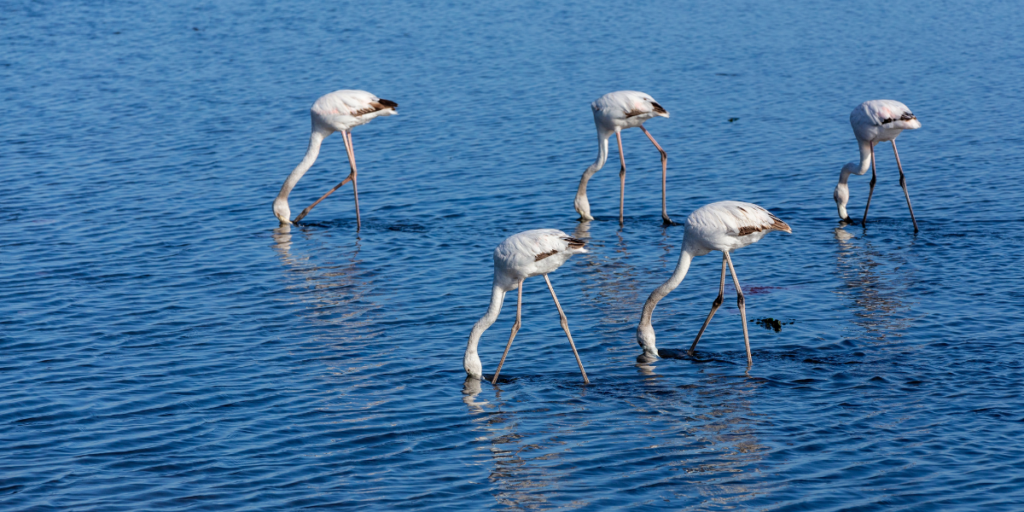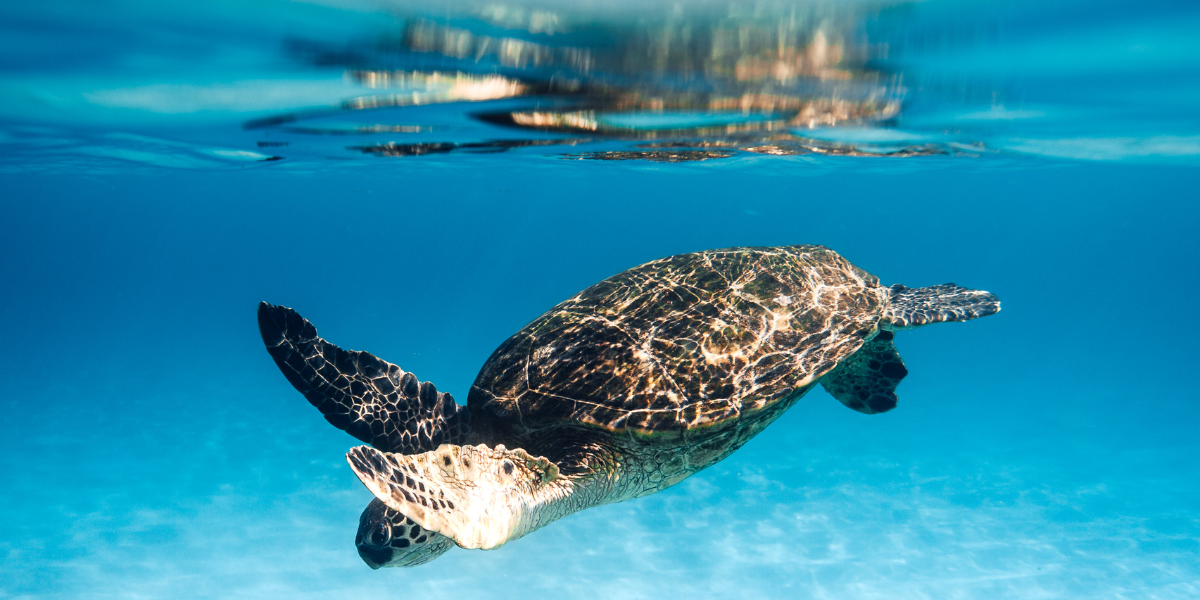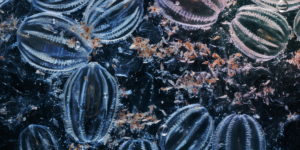Impact of Land Use Changes on Coastal Ecosystems: Sea Turtles and Shorebirds in Focus
Are you curious about the impact of changes in land use on coastal habitats and species such as sea turtles and shorebirds?
Coastal habitats are critical for many species, providing a rich variety of food sources, breeding grounds, and shelter. However, human development often leads to changes in land use that can have significant effects on these ecosystems.
In this article, we will explore the different types of land use changes that affect coastal habitats, the consequences of these changes on the environment and wildlife populations, and the conservation strategies that can help mitigate their negative impacts.
As human populations continue to grow along coastlines around the world, there is a rising need for infrastructure such as ports, marinas, beach resorts, and residential developments. These activities inevitably change how we interact with coastal environments by altering water quality and temperature regimes or removing vegetation and other natural features from shorelines.
The ways in which we alter our surroundings at these sites can have profound effects on species like sea turtles that rely heavily on beaches for breeding or shorebirds that depend on intertidal areas for feeding during migration. Through understanding how shifts in land use patterns are shaping our coasts’ ecological dynamics over time – including both positive outcomes (e.g., habitat restoration) as well as negative ones (e.g., habitat fragmentation), it becomes possible to devise effective management plans aimed at preserving these vital ecosystems for future generations.
Key Takeaways
- Coastal habitats are crucial for many species, including sea turtles and shorebirds, providing food sources, breeding grounds, and shelter.
- Human development, such as coastal development and urbanization, often leads to changes in land use that can result in habitat loss or degradation, pollution, and rising sea levels, among other negative impacts on ecosystems and species.
- Destruction of nesting sites and feeding areas due to land use changes can have devastating impacts on species like sea turtles and shorebirds, leading to decreased genetic diversity and increased susceptibility to disease among affected populations.
- Effective conservation efforts must focus on protecting the nesting, feeding, and breeding habitats of sea turtles and shorebirds, through collaborative efforts between government agencies, conservation organizations, and local communities, and by educating people about the importance of coastal ecosystems and responsible fishing practices, among other strategies.

The Importance of Coastal Habitats for Sea Turtles and Shorebirds
Coastal habitats are crucial for sea turtles and shorebirds, as they provide nesting sites and food sources. These habitats are ecologically significant as they serve as breeding grounds for various species of sea turtles and migratory birds.
The sandy beaches along the coast are important nesting sites for sea turtles such as loggerheads, green turtles, leatherbacks, and hawksbills. Similarly, the coastal marshes and mudflats serve as feeding areas for a variety of shorebirds like sandpipers, plovers, and herons.
However, these coastal habitats face numerous threats and challenges that endanger the survival of these species. Human activities such as coastal development, pollution from plastics and oil spills harm both the habitat’s quality and quantity. Habitat loss due to human encroachment is also a major issue affecting these ecosystems.
Climate change has also caused rising sea levels which further deteriorates coastal habitats by eroding beaches or flooding wetlands. It’s essential that we take measures to protect these vital habitats to ensure their continued existence for future generations of sea turtles and shorebirds alike.
Types of Land Use Changes That Affect Coastal Habitats
Transformations in the way we utilize land can have a profound impact on the diverse array of creatures that call the coast their home, including sea turtles and shorebirds.
Coastal development involves building structures near or on coastal areas, such as buildings, marinas, and seawalls. This often results in loss or degradation of crucial nesting sites for sea turtles and feeding areas for shorebirds.
Urbanization is another type of land use change that affects coastal habitats by increasing pollution levels from sources such as runoff from paved surfaces and sewage systems. These pollutants can harm or kill marine life, including sea turtles that rely on clean water to survive.
In addition, increased human activity along the coast can disturb shorebirds’ natural feeding behaviors, leading to reduced food availability and potential population decline.
To mitigate the negative impacts of these land use changes on coastal habitats and species like sea turtles and shorebirds, it is essential to carefully consider development plans and incorporate measures to protect critical habitat areas. This includes creating buffer zones between developed areas and sensitive habitats, implementing sustainable practices like green infrastructure to reduce runoff pollution, and educating communities about responsible coastal management practices.
By working together to prioritize conservation efforts alongside economic development goals, we can ensure a healthy future for both our coastal ecosystems and the communities that depend on them.
The Effects of Land Use Change on Coastal Habitats
As you consider the effects of land use change on coastal habitats, there are three key points to keep in mind. First, the destruction of nesting sites and feeding areas can devastatingly impact species like sea turtles and shorebirds, which depend on these habitats for survival.
Second, pollution of waterways can significantly alter the health and well-being of both marine life and the surrounding ecosystem.
Finally, habitat fragmentation resulting from land use changes can lead to decreased genetic diversity and increased susceptibility to disease among affected populations.
It’s crucial to carefully consider these factors when making decisions about land use in coastal areas to safeguard these fragile ecosystems for future generations.

Destruction of Nesting Sites and Feeding Areas
Losing critical land for nesting and feeding due to human activities is devastating for sea turtles and shorebirds alike. Coastal development, pollution, and climate change are all contributing factors that lead to the destruction of nesting sites and feeding areas.
Here are four reasons why these changes in land use have such a significant impact on these species:
- Sea turtles rely on specific beaches to lay their eggs, but coastal development often results in the loss of these essential habitats.
- Shorebirds depend on healthy estuaries for food during their migration, but pollution from nearby human activities can contaminate these areas and harm the birds’ food sources.
- Climate change leads to rising sea levels that can flood both nesting sites and feeding areas, forcing species like sea turtles and shorebirds to adapt or perish.
- Human activities such as beach nourishment projects can further disrupt critical habitats by altering sand composition or blocking access to nesting sites.
As we continue to develop our coasts, it’s important that we take into account the impact our actions have on these vital ecosystems. Without proper conservation efforts, we risk losing not only iconic species like sea turtles and shorebirds but also the crucial services they provide to our oceans and beyond.
Pollution of Waterways
You must minimize the amount of plastic and other pollutants that pour into the waterways to prevent harm to marine life. Coastal habitats and species such as sea turtles and shorebirds are particularly vulnerable to this type of pollution, which can disrupt their feeding habits, cause disease, and even lead to death.
Controlling runoff from farms, businesses, and residential areas is one effective way to reduce the levels of pollutants in our waterways. By implementing measures such as rain gardens, permeable pavement, and buffer strips along streams and rivers, we can help filter out harmful chemicals before they reach the coast.
Another consequence of pollution in our coastal waters is the occurrence of harmful algal blooms (HABs). These events can be triggered by an excess of nutrients in the water from sources such as fertilizer runoff or sewage discharge. HABs can have serious impacts on both human health and marine ecosystems.
Some species of algae produce toxins that can cause respiratory problems or gastrointestinal illness when ingested or come into contact with skin. For sea turtles and other creatures that rely on healthy coastal habitats for survival, HABs can also result in reduced food availability or even death due to oxygen depletion in affected areas.
Therefore, it’s essential that we take steps to reduce nutrient pollution in our waterways so that we may protect these vital resources for generations to come.
Habitat Fragmentation
Now that we’ve discussed the impact of water pollution on coastal habitats and species, let’s turn our attention to another important factor: habitat fragmentation.
This refers to the process by which large continuous areas of natural habitat are divided into smaller, isolated fragments due to human activities such as urbanization and agriculture.
As a result of habitat fragmentation, coastal habitats and species such as sea turtles and shorebirds may experience negative effects on their survival rates, reproduction, and overall health.
Habitat connectivity is crucial for these animals because it allows them to move freely between different parts of their habitat in search of food, mates, or suitable nesting sites.
When this connectivity is disrupted, populations can become isolated from one another which can lead to reduced genetic diversity and increased vulnerability to disease outbreaks or other environmental stressors.
Landscape connectivity plays an essential role in maintaining healthy ecosystems that support diverse communities of plants and animals.
Therefore, understanding how changes in land use affect habitat fragmentation should be a priority for conservation efforts aimed at protecting these vulnerable species.
The Impact of Land Use Change on Sea Turtles and Shorebirds
Hey, did you know that changes in land use can have a major impact on the habitats and lives of sea turtles and shorebirds? Let’s take a closer look at how these changes affect their migration patterns, nesting behavior, and ultimately their survival. Understanding the impact of land use change on these species is crucial for effective conservation efforts.
Sea turtles and shorebirds rely on specific habitats for nesting, feeding, and breeding. Coastal development such as urbanization or agriculture can disrupt these habitats by altering the landscape or introducing pollutants into the environment. This can lead to a decline in suitable nesting sites or food sources for these species.
As a result, sea turtles may alter their migration patterns to find new areas to nest while shorebirds may experience decreased reproductive success due to habitat loss. By exploring how sea turtle and shorebird behavior responds to land use change, researchers can gain valuable insights into developing conservation strategies that protect their habitats.
Conservation and Management Strategies
Conservation efforts must focus on developing strategies that protect the nesting, feeding, and breeding habitats of sea turtles and shorebirds in light of land use changes. Collaborative efforts between government agencies, conservation organizations, and local communities are crucial to achieving this goal. These partnerships can help ensure that policies are put in place to protect critical habitats for these species.
Community involvement is also vital for successful conservation efforts. By educating people about the importance of coastal ecosystems and the role that sea turtles and shorebirds play within them, we can create a sense of responsibility among residents living in proximity to these areas. This can lead to better management practices such as reducing light pollution on beaches during nesting season or implementing responsible fishing practices that reduce accidental bycatch.
By working together with local communities, we can create sustainable solutions that will benefit both the economy and the environment while protecting these important species for future generations.
Frequently Asked Questions
How do changes in land use affect other species besides sea turtles and shorebirds in coastal habitats?
You may wonder about the impact of human activities on biodiversity loss in coastal habitats. Changes in land use, such as deforestation or urbanization, can lead to habitat destruction and fragmentation, endangering many species beyond sea turtles and shorebirds.
What are some examples of successful conservation and management strategies for coastal habitats?
Coastal conservation and ecosystem management are crucial for maintaining the health of coastal habitats. Effective strategies include habitat restoration, reduction of pollution, and regulation of human activities such as fishing and development. Such efforts promote a sense of community ownership over these important ecosystems.
Are there any economic benefits associated with preserving coastal habitats?
Preserving coastal habitats can provide economic benefits through tourism, fisheries, and shoreline protection. Sustainable management practices ensure long-term profitability while preserving the environment. Join the efforts to create a better future for our planet.
What role do human activities, such as tourism, play in the degradation of coastal habitats?
Sustainable tourism is key to protecting coastal habitats from degradation caused by coastal development. Human activities such as uncontrolled construction and waste disposal cause harm to these habitats. Adopting sustainable practices can help conserve these ecosystems and promote a sense of belonging among visitors.
How do climate change and sea level rise impact the conservation of coastal habitats for sea turtles and shorebirds?
To conserve coastal habitats for sea turtles and shorebirds, adaptation strategies and habitat restoration are necessary due to the impacts of climate change and sea level rise. Engage in data-driven conservation efforts to belong to a community dedicated to protecting these species.
Conclusion
Congratulations, dear reader! You now have a better understanding of how changes in land use can affect coastal habitats and the species that rely on them, such as sea turtles and shorebirds.
Coastal habitats play a vital role in the survival of these creatures, providing nesting grounds and foraging areas. However, human activities such as urbanization, agriculture, and industrial development can lead to the destruction or alteration of these habitats.
This can result in decreased biodiversity and a decline in population numbers for sea turtles and shorebirds. It’s essential to implement effective conservation and management strategies to protect these precious ecosystems from further damage.
In conclusion, we must work together to mitigate the negative impacts of land use change on coastal habitats. Through careful planning and sustainable practices, we can ensure that future generations will be able to enjoy the beauty and diversity of our coastlines while safeguarding the welfare of vulnerable species like sea turtles and shorebirds.
Let’s strive towards a more harmonious relationship with nature by making responsible choices that prioritize conservation over exploitation.




